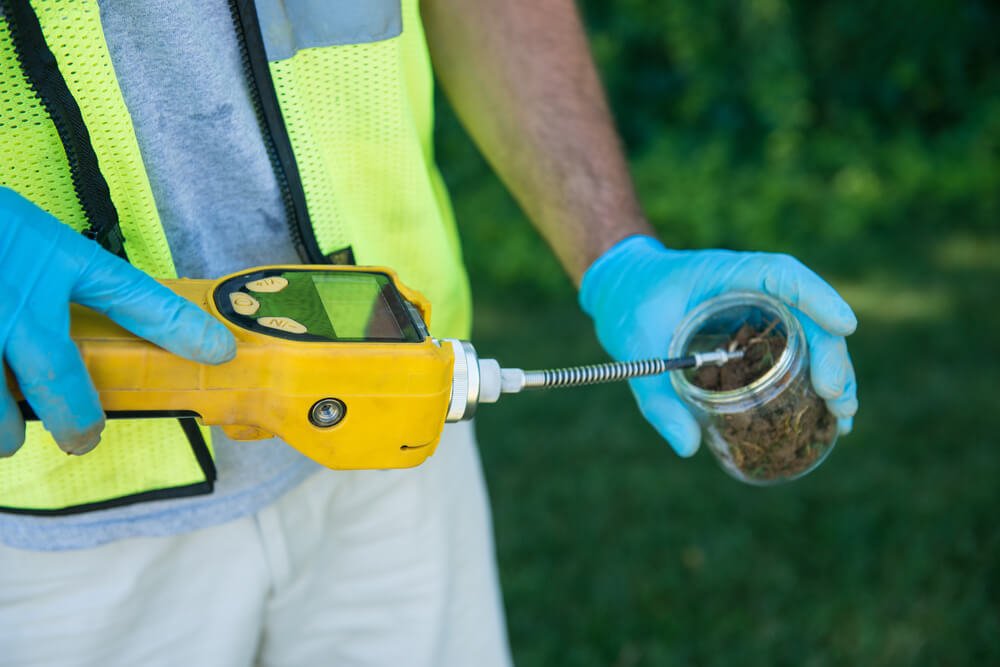Soil Testing In Texas

Soil pollution or contamination may cause disease, damage surrounding ecosystems and even make an area uninhabitable. The most common soil contaminants are petroleum hydrocarbons, pesticides and heavy metals such as lead. Common sources of these chemicals include agriculture, traffic accidents, mining, underground tank leaks, and oil and fuel dumping.
Soil testing is the first step in cleaning up a contaminated site. At Central Texas Spill Response, our experienced professionals use the latest technologies to obtain accurate test results. Our expanding company provides soil testing and cleanup services in Austin and the greater Austin area, as well as other locations in East and West Texas.
Why Soil Testing Is Necessary
The reasons for soil testing are as varied as the uses and history of a site. If you plan to grow food crops, for example, contaminants may affect the fruits, vegetables or herbs that you harvest. If the site is a park where people bring their dogs, the pets may track soil contaminants indoors.
Contaminated soil is especially dangerous for children and pregnant women. Small children who play outdoors have a higher risk of harm because they tend to be more exposed to soil particles and do not have the acquired immunity of adults. Lead is especially dangerous for children, pregnant women and developing fetuses as it has been linked to developmental problems.
A site's history may be a cause for concern. For example, a building that was constructed before 1978 may have lead-based paint that has chipped off and worked into the soil. A nearby automobile repair shop may be a source of petroleum contamination from gasoline leaks.
Soil Assessment and Screening
When we arrive at a site, our first tasks are soil assessment and screening. Organic matter and elements such as nitrogen, phosphorus and potassium belong in healthy soil. A soil assessment checks soil components for chemicals and other toxic substances that do not belong there.
Screening involves the removal of debris and other visible pollutants from the soil. Our experts then test the soil for other contaminants.
Composite Sampling
After soil assessment and screening, we may need to collect soil samples for further analysis. Composite sampling involves taking samples from various depths of the soil and mixing them into one sample. This method tests soil from a broad area while avoiding the expense of testing multiple samples. For example, if you plan to grow vegetables on your property, samples should be taken from depths of two to 14 inches, which is the depth of most vegetable roots.
Site Remediation After Soil Testing
If soil testing shows contamination, we will use the best site remediation methods available. Common methods include
- Bioremediation — introducing nutrients and microorganisms, such as bacteria and fungi, to break down organic contaminants and encourage growth
- Chemical remediation — treating the contaminated soil with chemical additives to remove pollutants
- Removal — digging up the polluted soil and transporting it on dump trucks to landfills; this method is suitable if the contaminants are in the top layer of the soil
The experts at Central Texas Spill Response choose the best site remediation for every situation. We will clean and restore the area quickly and efficiently so that you can get back to work.
Here When You Need Us
There’s no time to waste when you are concerned about contamination. Central Texas Spill Response takes every chemical or hazardous waste spill seriously, whether it’s near a small office or in a large industrial park. Our 24-hour emergency response line is available when you need to book an appointment. Please don’t hesitate to contact us if you have questions about soil testing.
We Service Greater Austin & Greater San Antonio Areas
- Dripping Springs
- Georgetown
- Kyle
- Lakeway
- New Braunfels
- Pflugerville
- Round Rock
- San Antonio
- San Marcos
- Seguin
- Shertz
- Wimberley
